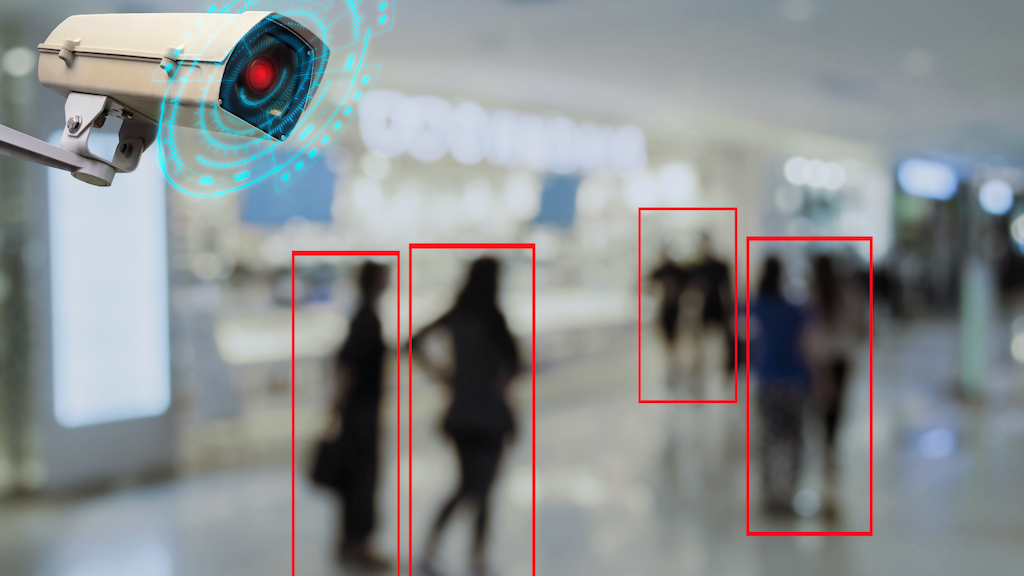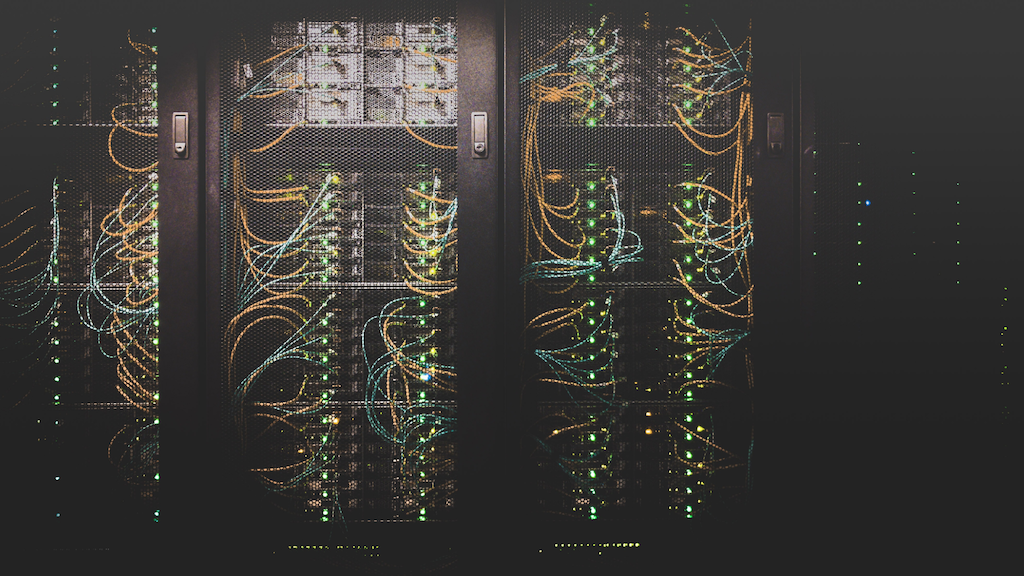Tag: AI
Ecommerce or electronic commerce refers to a type of business model that allows companies or individuals to buy and sell products online.
It’s a real challenge to find someone who hasn’t interacted with ecommerce stores, as online retail sales in the US alone are expected to increase by 17.9% to $ 933.30 billion.
Such rapid growth over the past decade required e-commerce stores and online retailers to always seek constant innovation and development in their operations.
There have been many different strategies to achieve innovation; However, today the most important and powerful one is Artificial Intelligence that can serve as a superpower for e-commerce stores and give them a significant competitive advantage. Let’s find out which aspects of e-commerce benefit the most from AI.
Supply chain management
Supply chain management involves the flow of goods and services from companies to customers and is a crucial part of all e-commerce businesses. With the help of proper supply chain management, e-commerce stores can ensure that the right products reach the right consumers at the right time. All this allows companies to reduce costs, improve efficiency and form a better customer relationship
With the help of data and machine learning algorithms, artificial intelligence systems can help e-commerce stores with inventory management to avoid overstocking or understocking. Based on the same technology, companies can ensure that their warehouse space is optimized with the best possible product allocation based on their demand and space capacity..
Delivering goods is another vital part of this process and AI is here to help too. By analyzing data related to weather, congestion and traffic accidents, artificial intelligence algorithms provide the fastest and most efficient road suggestions, saving time, fuel and speeding up the delivery process.
Customer service


Today, customers choose companies not only based on the products, but also on the after-sales service they offer. Nobody is insured against faulty goods or a problem related to order, however, a positive customer service experience not only neutralizes the inconveniences but also strengthens the customer’s relationship with the brand. That is why all buyers look at the reviews before choosing the brand.
To provide the best possible customer service, companies began to implement artificial solutions in their operations – one of them is chatbots.
AI-powered chatbots help companies automate customer service on a large scale without sacrificing quality of service. Thanks to Natural Language Processing (NLP), chatbots can analyze the customer’s inquiry, understand their message, and provide thoughtful responses and assistance.
The same NLP technology can help with customer feedback analysis. Paying attention to every customer feedback is critical, but a very difficult and demanding activity. However, with the artificial intelligence system, you can automate this process and get an analysis of customer sentiment in seconds.
This way, your staff can forget about the manual work of reading thousands of reviews and instead spend their time solving customer inquiries and problems.
Employee experience


Happy employees mean happy customers and happy customers mean growing revenue. Companies began to realize that happy employees are more productive and motivated to do their jobs and have an amazing impact on business.
While company events and benefits are a great way to start, your main goal should be to eliminate boring and repetitive tasks. In fact, one of the most desired things by job seekers is meaningful work.
The feeling of contribution to the company by doing a job that can bring a real change makes your staff more appreciated and valued. The automation that came with AI eliminated repetitive manual work from employees and actually augmented them to drive higher productivity.
As we mentioned earlier, with the help of AI automation, employees can spend their time performing tasks that have real value and solve real problems.
Customer experience
“When the customer comes first, the customer will last.” This is the exact reason that companies pay so much attention to the customer experience.
Earlier, we mentioned the importance of customer service, which is just one piece of the puzzle that focuses on supporting the customer, however, customer experience is a broader concept and includes everything related to customer perception and sentiment about the business.
For e-commerce businesses, customer experience can mean everything from the ad the potential buyer sees on social media, to the website, product quality, or after-sales service.
So how can AI improve the customer experience for ecommerce companies? Personalized experiences are one of the most important benefits of AI for e-commerce.
Stores have a wide range of products and it is essential to show the right product to the right customer. This engages the customer more with the brand and increases sales.
AI can analyze and compare data related to search history, interests and user activity, and predict the most desired products that the customer might find useful. However, this is just one of the ways that AI helps e-commerce improve customer experience and its use cases are steadily increasing.
Conclusion
Since e-commerce stores record a large amount of data, it is a great opportunity for artificial intelligence systems to help such companies forecast future demand, analyze the customer journey on the website, and offer personalized experiences to customers.
With the help of artificial intelligence, e-commerce stores take their services to the next level, improve customer retention and increase their sales. In today’s market, it is important to keep up with the competition and constantly seek innovations, and for this, AI is a perfect tool.
If you want to enhance your projects with AI-powered solutions, schedule a free consultation call with our experts and let’s discover the potential of our partnership.
Social media was initially created for people to upload photos and make friends. However, it didn’t take long for companies to realize that social media presence plays an important role in brand recognition, marketing, customer relationship, and overall business growth.
Today, most businesses can be found on social media like Facebook or Twitter. These platforms are so popular that it often happens that customers visit the company’s social media page before their website. In fact, research shows that 91% of American businesses use social media.
With more and more companies joining social media, competition became fiercer and customers more demanding. The introduction of new tools and strategies to win customers on social networks made the process more complicated and difficult than it seems.
Fortunately, solutions such as artificial intelligence can help different teams in your company, such as marketing, customer service and sales, to order social media activities well, increasing their efficiency and effectiveness. Let’s find out exactly how it does that.
Customer feedback analysis


Online business reviews have a significant influence on the purchasing behavior of potential customers. Regardless of your marketing efforts and strategies, online reviews are of greater importance and weight to customers.
However, customer feedback is not only important for branding, it also serves as a vital tool to improve your product or service and find the improvement gaps.
No one knows your product better than your customers. That’s why listening to them gives you access to priceless business-critical information and also makes your users feel truly valued and important, helping with customer retention.
However, with so many different social media platforms, it became very difficult to keep track of each customer’s sentiment, extract important information, and act on it. This is exactly why AI-powered sentiment analysis is vital to businesses.
Using natural language processing (NLP) and neural networks, AI-powered solutions take seconds to analyze mountains of customer feedback data, rank it by sentiment and extract the most important keywords.
This way, your team will have access to already analyzed important information, and instead of wasting time reading reviews, the team will be proactive and work towards customer satisfaction based on insights from the feedback.
Fake follower check
Another novelty that came with social media was influencer marketing. Influencer marketing is a type of marketing that involves endorsement and product placement of influencers – people who have the power to influence other purchasing decisions due to their experience or knowledge in the specific field.
Brands spend a lot of money to appear in an influencer feed due to the large number of followers that the person has. However, if the followers are not authentic, the commitment and the money invested were not worth it.
With the help of machine learning algorithms, AI systems can analyze different criteria of authenticity, such as engagement rate, number of followers, number of posts, etc.
All of these details provide businesses with crucial information to avoid targeting the wrong audience resulting in a loss of money.
Chatbots
AI-powered chatbots use natural language processing (NLP) and machine learning that simulate human conversations and provide thoughtful responses to customer inquiries. Such a system is much more advanced than automated responses, as AI chatbots understand customer intent.
Thanks to this solution, companies can reduce service costs and, at the same time, offer continuous support to customers.
Using chatbots is a perfect way to improve the customer experience, as your service agents are free from repetitive tasks and can focus on more meaningful interactions with customers.
Ad automation


Analyzing and optimizing online advertising campaigns on platforms such as Google Adwords or Facebook is not an easy task and requires considerable time to master.
Tracking ad performance becomes a challenge when companies have dozens of different versions of each campaign.
Analyzing the data provided by these platforms such as impressions, cost per click, click-through rate, conversions, etc. can certainly be overwhelming and time-consuming.
By gaining access to data such as ad spend, target audience, ad creatives, the AI-powered solution can automatically identify the best performing ads, optimize how much to bid on them and identify the best target audience.
Because artificial intelligence systems can analyze a large amount of data in seconds, ad automation becomes especially valuable for companies with many ad sets and ad campaigns.
Conclusion
Today, most of your clients and potential customers are on social media, regardless of the industry you operate in. That’s why doing your best on these platforms gives you the opportunity to better connect with your customers, increase your brand awareness, and boost your sales. To achieve this successfully, AI solutions can be a perfect tool.
AI can be seen as a superpower for social media marketing activities due to its benefits. AI can identify your best-performing campaigns, notify you of trends, optimize your advertising, and free your staff from repetitive manual labor.
If you want to take your social media marketing to the next level, schedule a free consultation call with our artificial intelligence experts and let us show you how our AI solutions can help your brand shine on social media.
Video cameras in stores became an everyday occurrence. And while many of us are concerned about the privacy issues that the rise of video surveillance brings, we cannot forget the benefits that come with this technology.
Having CCTV cameras on your premises warns potential thieves of the risk of arrest and reduces the likelihood of theft.
Since many private companies cannot afford private security, they consider security cameras to be the best means of ensuring safety and avoiding the risk of loss and damage.
However, while video surveillance helps companies identify and catch criminals red-handed, it still has its shortcomings, namely the human error factor.
Because these systems require the full attention and dedication of human staff, certain important and noteworthy events may go unnoticed or may be overlooked.
This is exactly where Artificial Intelligence (AI) comes in and helps companies take their video security to the next level. Let’s explore how exactly AI does that.
What is Artificial Intelligence and how is it used in surveillance?


Artificial intelligence (AI) is the simulation of human intelligence using machines. Artificial intelligence systems use data to identify patterns, make predictions, and take appropriate actions.
AI’s ability to automate tasks with high precision, increased speed, and reduced costs made the solution very popular and widely used in almost every industry, and the security sector is no exception.
AI operates the same way in surveillance. Machine learning (ML) algorithms are trained on stored data, video footage, from surveillance cameras, where they learn to detect, classify and recognize different objects or identify people.
Such AI-powered solutions can be integrated into the company’s security system, where it is possible to automate visitor tracking, prohibited object identification, employee monitoring, and other important details.
What are the benefits of AI-powered security cameras?
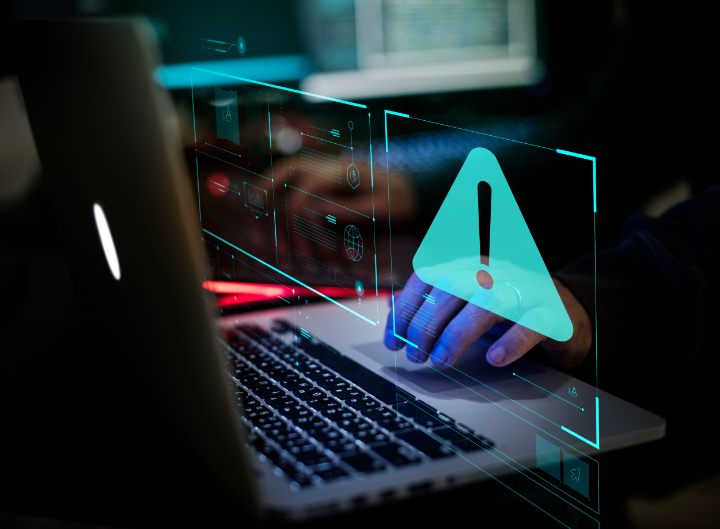

Let’s explore the benefits that Artificial Intelligence-powered video security offers businesses.
Improved accuracy
As we mentioned above, since regular security cameras are operated by real people, there is room for human error. Perhaps in a small store, this form of supervision will be effective, however, keeping track of what is happening becomes especially difficult in a large facility with a considerable number of visitors.
Our attention span can be adversely affected by several factors, one of which is repetitive and mundane tasks. Studies have shown that the average human’s attention sap begins to decline significantly after just 20 minutes.
With the help of the data, the AI-powered system can be trained to identify each event and trigger alarms in the case of an unusual occurrence or behavior. With AI video surveillance, regardless of facility size or a number of visitors, companies can be confident that no detail or threat will go unnoticed due to fatigue or human error.
24/7 surveillance


A business may have numerous cameras on its premises, however, it requires multiple staff shifts to ensure uninterrupted monitoring, which is not possible for most companies
However, with the help of artificial intelligence, companies can overcome these challenges and have uninterrupted monitoring. Even if the location is closed, AI-powered video systems can provide real-time surveillance and analysis of the location’s security status and trigger alerts in the event of an urgent situation, without the need for human interference.
Decreased costs


Not only can businesses save money by freeing security personnel from continuous video screen monitoring, they can also significantly reduce false alarms caused by user error or non-threatening triggers such as animals or flashlights.
Conclusion
Monitoring facilities and ensuring the safety of your staff and customers is of the utmost importance, therefore AI-powered video surveillance can be a great tool for companies to automate and transfer monitoring to a self-learning, intelligent security system that can guarantee higher safety, higher precision and cost-effectiveness.
If this solution and its benefits are interesting to you, and you would like to know more about how it can benefit your company, schedule a free consultation call with our AI experts and let’s discuss together how our services can help make your company more safe.
We have seen and heard many uses of Artificial Intelligence (AI) in various industries, but one of the most promising and impactful applications of AI is in the healthcare sector.
With the sensors and software available, we are recording more data than ever. This helps artificial intelligence algorithms become more sophisticated and automate tasks more effectively and efficiently than humans.
In the healthcare sector, through medical and hospital records, physical examinations, and IoT devices, we are collecting a significant amount of data. However, the sheer amount can be overwhelming for humans to take full advantage of.
That’s where Artificial Intelligence comes in and helps doctors and hospital administrators automate certain tasks.
Let’s take a look at the ways the healthcare industry can benefit from AI in its day-to-day operations.
Early diagnosis


Early diagnosis refers to the detection of symptoms of the disease in patients at an early stage that results in easier and more successful treatment.
Identifying a disease requires a multi-stage process in which patients are screened by various healthcare professionals with different tools. Subsequently, physicians must re-consult patients and their former doctors to make an accurate diagnosis, which can be quite a costly and timely procedure.
However, because AI-powered systems can accumulate and store data in one place, they can quickly access current or past health problems of patients, compare details, and speed up the diagnostic process.
With the help of historical patient data and computer vision capabilities, AI solutions can be used to identify diseases from X-rays, MRIs or CT scans and alert healthcare professionals for a more detailed examination.
Improved protection of patient data
Accumulated patient data is a great opportunity for medical advancement and faster diagnosis, yet it is also a great responsibility. Data security and confidentiality is vital in the healthcare industry and is regulated by various laws such as Health Insurance Portability and Accountability Act (HIPAA).
Artificial intelligence and machine learning (ML) serve as perfect tools to protect patient data. They can help medical facilities with:
- Processing large volumes of data on shared files, emails or visited websites
- Faster detection of security breaches by cross-referencing multiple alerts.
- Identifying and automatically blocking unauthorized application behavior
- Data access with smart authentication methods such as fingerprint scanners or facial recognition
Surgical robots powered by AI
A study showed that use of robotic surgery for all general surgery procedures increased from 1.8% to 15.1% from 2012 to 2018.
Surgical robots are becoming more and more common around the world, but people still don’t fully trust them. However, the same happened with autonomous cars, although now we see a greater acceptance of society towards them.
Although it is very likely that surgeons will not be replaced by robots (at least not in the near future), the healthcare sector realized that they can serve as an important tool to improve the performance of surgery.
Artificial intelligence systems record and collect data from surgeons’ operations and analyze it with intelligent algorithms. This process helps surgical robots with decision making, problem solving, and other performance factors. The results are:
- More precise surgeries
- Faster recovery and less scarring
- Improved visualization
- Etc.
Automated administrative workflow assistance


Healthcare paperwork is a burdensome task that not only bothers patients but also doctors. In fact, the average doctor in the United States spends 8.7 hours a week (16.6% of the working day) on administrative procedures, which costs the healthcare sector US $ 812 billion.
With natural language processing (NLP) and machine learning, healthcare facilities can process medical documents, update medical records, schedule patient visits, and triage patients.
In this way, doctors can stop worrying about paperwork and spend more time caring for and diagnosing patients.
Decreased costs
With faster diagnostics and process automation, it’s no wonder AI-powered systems can lower the cost for clinics. However, it is not only profitable for businesses, but also for patients.
Artificial Intelligence frees healthcare professionals from mundane tasks and augments their skills with smart algorithms. This not only allows doctors to participate in more important and specialized tasks, but it also eliminates human bias.
AI has the ability to process and analyze data at the speed of light, while providing a high level of precision. Performing routine tasks, such as radiology, using AI-based systems can help prevent human error and provide a correct diagnosis.
In this way, patients will spend their time and money on the correct treatment plan, saving money and ensuring a healthy recovery.
Conclusion
Implementing AI is a challenge in all industries, especially in healthcare, where the health of patients is at stake. Yet despite the challenges, the benefits and opportunities that AI offers are vital to advancing the healthcare sector.
The recent pandemic has shown us how important the health industry is to humanity and that human personnel alone cannot meet the demand in the event of force majeure. That is why more attention has been paid to including AI in the sector, so that everyone can have affordable and effective access to healthcare.
Would you like to enhance your project with AI-powered solutions? Schedule a free consultation call with our experts and let’s find out how MaxinAI can help you get the most out of AI.
The logistics industry is concerned with managing the acquisition, storage and delivery of resources to their final destination. Such a system has existed since ancient times, since the movement of products and services has always been in demand.
Although the industry has evolved and become more efficient in delivering products and services, the recent pandemic and the growing power of consumers demonstrated that there is still a need for innovative solutions in logistics.
Some of the common challenges in the logistics industry are:
- Reducing transportation costs
- Improving customer service
- Theft
- Sustainability
What if there was a single solution that could help companies overcome these challenges? The truth is that Artificial Intelligence is a perfect complement for the logistics industry not only to overcome challenges but also to improve and boost its operations.
Due to the amount of data that is generated at each stage of the supply chain process, such as from product production to shipment to sale, AI can serve as a powerful tool for the industry.
Let’s find out what are the main use cases for AI in logistics and how important it is for the industry.
Demand forecasting


We know that when it comes to production, resources are limited. That is why it is important to predict the exact demand for your product.
Demand forecasting helps companies to have a clear expectation and, based on that expectation, establish adequate stock levels and price the product correctly.
With the help of machine learning (ML) and AI, companies can analyze a large amount of information related to historical sales data, customer data and at the same time process other types of data in real-time, such as current discounts, trends and changes in income.
Machine learning algorithms increase the accuracy of demand forecasts by finding complex, non-linear relationships in huge data sets that no human could process in such a short time.
The implementation of AI solutions for demand prediction significantly reduces the risks of:
- Lost sales
- Product spoilage
- Extra operational and personnel cost
- Excess/shortage of stocks
Warehouse Automation
Intelligent automation and robotics are one of the most valuable features that AI offers to the logistics industry.
Artificial intelligence systems free warehouse personnel from repetitive and perhaps dangerous tasks by automating the process and providing greater speed and precision.
Smart warehouses using artificial intelligence automation are more productive and can operate 24/7, which would be very expensive and hardly possible in the case of only human labor.
For example, since Amazon automated most of its warehouse operations, its team doesn’t have to go through the tedious and boring task of moving a cart full of products, placing them on shelves, and scanning them to mark their location in a system.
Now all these tasks are handled by intelligent robots that perform the job faster and with greater precision, eliminating human error.
AI + IoT sensors
With the help of AI and IoT sensors, companies get a bird’s-eye view of all their operations.
IoT sensors can track the shipment status of each product, the condition of equipment and machinery, the temperature of facilities, and many other details that help managers understand the efficiency and state of their supply chain operations.
AI technologies, on the other hand, use IoT data, analyze it, and provide tips and advice.
For example, by acquiring data from IoT sensors about equipment load and weather conditions, AI systems can estimate when maintenance will be required to avoid machinery downtime.
AI route optimization


Fast and cost-effective delivery is very important in logistics because if managed incorrectly, it can cause unnecessary expenses.
AI can analyze all related data affecting freight transport and based on this data find the best possible route for fast delivery in real-time, such as weather conditions, traffic congestion, vehicle speed limit, etc.
Based on this data, artificial intelligence systems can find the best possible route for the fastest delivery in real-time.
Shorter routes are a more environmentally friendly approach, as they reduce vehicle emissions and prevent cars from releasing harmful particles.
AI theft prevention
Another way that AI can ensure that logistics operations run smoothly is by ensuring security.
By having access to data such as:
- The hotspots where thefts occur
- The types of goods that are stolen the most
- The period of the day when the crime occurs most frequently
- Thousands of hours of real and simulated images of the theft
Machine learning algorithms can analyze all information and warn companies of theft risks, provide real-time alerts, and suggest safer alternative routes.
AI-powered security alerts have become critical for logistics companies as cargo theft continues to be a huge problem affecting both consumers and businesses.
Customer service


Just as in any industry, customer satisfaction is a priority, the logistics sector is no exception. The elements of customer service in logistics include order fulfillment, fast delivery, quality products, etc.
In the previous points, we saw how AI solves some of these elements; However, another way that AI improves customer service is with smart chatbots and personalization.
Chatbots are available 24 hours a day, 7 days a week, which means that customers will not have to adjust to the standard business hours of the company and can send their inquiry whenever they want.
With the help of such automated systems, customers can quickly get assistance on delivery requests or information on the shipping status of their packages.
Accelerating responses and assistance to customer requests is a great way how artificial intelligence helps the logistics industry improve its customer service.
Conclusion
As AI is becoming more popular in logistics, more and more companies in the industry will implement the technology in their day-to-day operations. in fact, the market size for AI in the logistics and supply chain is expected to reach $ 12 billion by 2027.
Increased adoption of AI in logistics means we could see some innovative and groundbreaking AI use cases.
If you find the above-mentioned use cases interesting for your business and would like to understand how AI can benefit your specific use case, schedule a free consultation call with our experts and let’s discuss the topic in more detail.
Today we keep most of our files like pictures, videos, or other documents on cloud storage. Cloud storage refers to storing your data on the internet server which saves space on your device.
Just like we use cloud storage for personal use, it also offers value to businesses by allowing them to store and back up company data, run software applications, and more.
However, another alternative that companies have, which is becoming quite popular recently, is edge computing.
What is edge computing?
Unlike cloud computing, edge computing refers to the practice of collecting, processing, and analyzing data at the edge of the network, as close to the original data source as possible.
Some of the everyday devices we interact with use edge computing, for example, Amazon’s Alexa or self-driving cars.
Now, if there is the possibility of using cloud computing and processing data on Internet servers, why would these devices give priority to edge computing?
Benefits of edge computing
Speed
Because in edge computing, data is processed close to the source, the distance the data must travel is shorter, resulting in faster service and less latency. This is vital for businesses, as the delay in their service will upset the customer and cause costly damage.
In the case of smart devices like Amazon Alexa, thanks to edge computing, trigger word detection and speech recognition is done locally, and the processed text version of the request is sent to the cloud instead of the full voice recording.
Security


Edge computing serves as a double-edged sword when it comes to security. Since edge computing is a paradigm of distributed computing, it could increase potential attack factors. However, it doesn’t always add risk and can have some important safety benefits.
In the case of cloud computing, the data is transmitted to central data centers, while in edge computing this data is processed locally, and therefore, with the appropriate encryption capabilities, there is less data at risk.
Scalability
One of the most valuable benefits of edge computing is its scalability. This benefit may not be so easy to see, but even in the case of cloud computing, companies need to forward their data to their data centers.
When businesses expand, so must their IT infrastructure, such as data centers, to ensure solid and seamless service to customers. However, building and expanding data centers is a very expensive undertaking.
By combining IoT devices and edge data centers, companies can scale their operations and capabilities at a much lower cost without the need for data centers.
Edge computing and AI
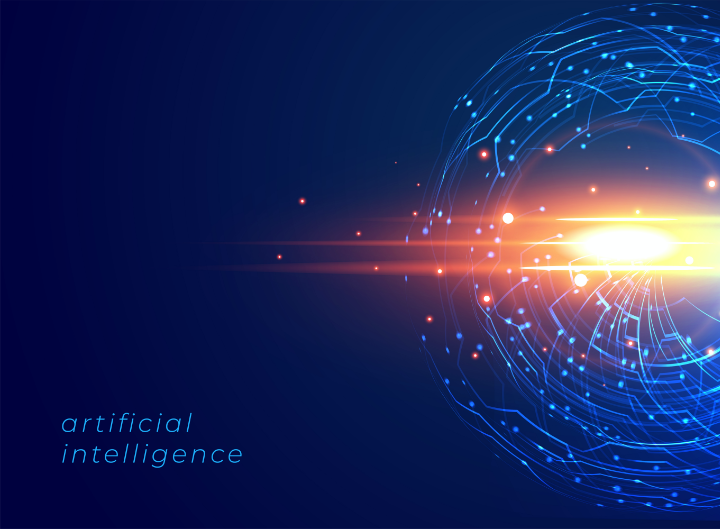

Although edge computing has quite a few benefits, it is further improved with the help of Artificial Intelligence. The combination of edge computing and AI is known as Edge AI.
Edge AI uses Machine Learning (ML) algorithms to process data produced by local hardware. The important part is that you don’t need an internet connection for Edge AI to process data and make decisions on its own.
This becomes especially important if there is internet downtime or no internet access. Machine learning algorithms can perform data operations locally, handle the devices themselves, and send data to the cloud once the internet connection becomes available.
Examples of Edge AI
To better understand the importance of Edge AI, let’s take a look at some of its examples.
Self-driving cars
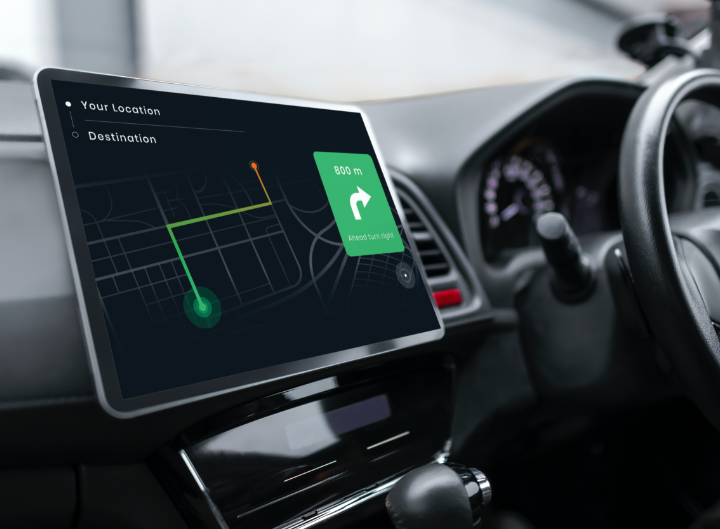

As we know, autonomous cars collect information from their built-in sensors that are analyzed in a matter of milliseconds to ensure a safe and accident-free ride when traveling.
But if this process depended solely on cloud computing, can you imagine the devastating result we would get in the event of internet connectivity problems?
Because autonomous vehicles cannot allow any delay in data processing, edge ai is vital for analyzing the data and taking the corresponding action even without the internet connection.
IoT sensors
Today, most manufacturing plants rely on IoT sensors. These sensors monitor environmental conditions, the status of the production line, device defects, and other details that are of great importance for the safety and smooth running of factories.
Again, local processing of the above-mentioned data rather than sending it to the cloud is vital. Sending your data to the cloud runs the risk of delays and downtime.
Therefore, to quickly analyze local conditions, detect potential anomalies, and act accordingly, factories need Edge AI due to its local data processing capabilities and ML algorithms.
Benefits of Edge AI
Based on the examples, it is clear that Edge AI can provide many benefits for businesses, such as:
- Real-time decision making
- Non-dependence on Internet connectivity
- Increased safety and security
- Easily adaptable to many different use cases
Conclusion
Thanks to IoT devices, the world is becoming more and more connected and this results in a large amount of collected data that needs to be processed quickly, which is one of the biggest benefits that Edge AI offers.
However, in addition to faster data processing, Edge AI offers security by keeping sensitive data locally and not sending it to the cloud.
With all the benefits and advantages that Edge AI brings, it’s no wonder the technology has a brighter future and will be deployed on a large scale by more companies.
Today, with the help of the Internet, we are not defined by borders and we can work from home in foreign companies. Aside from remote working, the Internet has made outsourcing even more accessible for businesses.
Outsourcing has become very popular and it is not a limited practice only for small businesses. Industry giants like Google, WhatsApp, and Slack are outsourcing, making it an effective and proven business model for others to follow.
So what made this practice so popular and why are more and more companies outsourcing some services?
It’s no wonder why cost reduction is the main driver of outsourcing. It often happens that the desired professionals and services in the country where the company operates cost too much.
That is why companies prefer to employ those services from a different country where the exact work costs them less.
Another equally popular reason for outsourcing is the lack of available talent internally. This is especially true when it comes to Artificial Intelligence.
AI can provide significant benefits to companies; However, as it is still an emerging field, AI-related positions are difficult to fill.
So if you’ve decided to outsource AI talent, it’s likely due to one of the reasons mentioned above.
Understanding the reasons for outsourcing is important, but it is equally important to know the details and technical aspects of the process to successfully outsource an AI team.
How to successfully outsource your AI team
- Research the team


As the saying goes: “Supposing is good, but finding out is better”. Since you are delegating a significant part of your business operation to an external team, it is important to ensure that the members are professionals.
Try to find out the projects the team has worked on and the results they got. Ask the team for their portfolio where details of past projects, such as the problem, solution, and results are described in depth.
With the help of LinkedIn and Google search, you can also separately check the profiles of the team members and their professional background.
- Schedule a consultation call


Once you’ve researched the team on the web, another great way to get to know them is through a consultation call.
This step should not be skipped as it gives you an opportunity to discuss the problem you want to solve. Ask the team what ideas they have for your AI project and if they see any risks related to it.
The consultation call will not only give you a better understanding of the team’s professional background, but will also help you see how the communication will unfold. Is there a cultural fit? Or maybe a language barrier?
If you are outsourcing a team from abroad, it is important to ensure that the communication language is satisfactory and that both parties understand each other perfectly.
PS: If you are looking for a customer-centric team with expertise in fields like AI, data science, big data, data mining, and much more, look no further and schedule a free consultation call with our AI experts.
- Technology skillset
Remember when we mentioned earlier that AI professionals were hard to find? That’s because AI is a challenging field and becoming a professional requires extensive experience and intelligence.
Since you want to outsource a portion of your business operations, you don’t want to settle for just any AI team, you want to make sure they are true professionals and your project is in good hands.
Ask the team what their top tech skills are and find out if they specialize in things like creating and implementing ML models, planning and executing an ML project on time, and if they know the particularities of a successful data science team.
Ideally, the AI team should be able to work crosswise with your business leaders so that together they can identify where AI can add value to your business. To successfully execute the project, an Engineering Director and project managers is also important so that all the steps are thought through and everything goes well.
In terms of other members, it depends on the project, but in general, ML engineers, data scientists, data engineers, and other professionals are often part of AI projects.
- Project Management process
It is important to be aware of how the implementation and execution of your project is going. This is especially true if this is your first time partnering with the outsourcing company.
What stage is the project in? Are the deadlines being met? Is the planned budget sufficient?
To stay on top of these issues, you need constant communication with the outsourced team. While email and phone communication is an option, an effective way of being in the loop are the project management tools like Jira, Asana, Trello, etc.
The tools will help you see in more detail the status of each individual task and who is assigned to it, deadlines, advanced reports and much more.
- Prepare legal documents


After deciding to start the partnership with a company, make sure you have all the necessary legal documents that will protect your business.
Do not share your project details, as well as your data, with an unfamiliar company until there is a mutual agreement regarding the terms and rights between two parties.
Generally, a document signed before starting cooperation is a Non-Disclosure Agreement (NDA). However, check with your lawyers to make sure you have all the necessary documents to protect your business.
Conclusion
Outsourcing can be a powerful tool for your company to quickly and effectively gain access to AI talent and accelerate your project execution.
However, it is also a procedure that should be taken very seriously and thoroughly examined before engaging in it.
Pay attention to all the steps mentioned above to make sure your AI outsourcing is successful. Understand if the company of your choice is focused only on fees or if they really want to find out if there is a fit between you two.
If their priorities are understanding your problem and making sure their service can help your business, then that is already a good sign.
Do you want a customer-centric company that takes all the steps mentioned above seriously? MaxinAI is a team of 60+ Ph.D. level experts previously employed in companies such as General Electric, CERN, Trip Advisor, Zalando, etc.
We took projects like power consumption prediction, document data extraction, facial recognition, and successfully delivered them to clients around the world.
If you want to be our next success story, schedule a free consultation with our experts and let’s build something great together!
Two of the hottest topics on the internet right now are blockchain and artificial intelligence. We keep finding news and articles about them almost everywhere.
While both of these technologies hold a lot of promise on their own, could they be even more powerful if they were merged? what makes AI and Blockchain so special to be in the spotlight lately, and what benefits would combining two such different technologies produce?
To answer the latter, we must first understand what Blockchain and AI are.
What is Blockchain?


Although the first idea about blockchain technology was described in 1991, it took 2 decades until in 2008, the first real-world blockchain application, Bitcoin, was introduced on the internet.
Blockchain is a digital database of transactions. It serves as a digital ledger that stores information in blocks. This information is copied and distributed over a network of computers.
Before a new transaction is added to a blockchain, it is validated by multiple computers that ensure the authenticity of the transactions, in this way, the system is protected against someone adding invalid blocks and transactions.
This means that if someone sends digital coins to a friend, he/she cannot hack into the system and add additional transactions that did not take place.
Today, our digital footprints and our actions are constantly being recorded and tracked. Blockchain gives us the necessary anonymity while providing transparency and increased security.
So, while the transactions are public and can be seen by everyone, the true identity of the participants is not revealed.
What is AI?
Artificial intelligence (AI) is another revolutionary technology that is changing the world. Its application has spread to almost every sector of the economy, boosting profitability and driving growth.
Artificial intelligence is a computer system that performs tasks that traditionally require human intelligence.
Data is the key to making AI systems work. With the help of data, AI-powered systems can recognize patterns and make independent and intelligent decisions to obtain the best possible result.
With the right quantity and quality of data, AI offers the following benefits:
- Saving time and costs by automating routine attacks
- Predicting the outcome based on historical data
- Eliminating human error
- Making faster and more accurate decisions
Exactly with the help of artificial intelligence, companies can forecast energy demand, identify diseases in the early stages, optimize operations and much more.
Benefits of merging AI and Blockchain
Now that we understand what blockchain and artificial intelligence are, let’s move on to real-world applications and the benefits of merging the two.
Enhanced computing power


One thing that comes to everyone’s mind when we hear mining cryptocurrencies like Bitcoin, is a lot of processing power and electricity.
The process of “mining” means computers that solve complex mathematical problems in order to be rewarded with new cryptocurrencies.
So to mine Bitcoins, for example, computers test all character combinations to guess the correct one and verify transactions.
The point is that the more miners join the network, the more difficult it will be for the computers to guess the combinations. Ultimately, this results in a need for more processing power and electricity for mining.
The way AI has the potential to improve the process is by handling mining in a smarter way. AI systems will be able to increase accuracy and efficiency every time they guess a correct combination, as they will have more experience, that is, the training data.
With such technology, we could save a huge amount of wasted energy and not only speed up the process, but also make it less expensive.
Explaining AI decisions
The decisions and actions taken by AI algorithms are difficult for humans to understand due to the large amount of data that the system can process in a matter of seconds.
Because of this, the AI decision-making process is like a black box for researchers. Since we cannot understand what happens during the process and how AI systems “think”, it creates a roadblock and restricts researchers from fully understanding why AI makes certain decisions.
As we know, every transaction on the Blockchain is recorded and can be traced. So if all the variables and processes used during AI decision making are recorded on the blockchain, we will be able to understand the logic of the system and inspect the entire process, from start to finish.
Data security


We know that data is the lifeblood of AI. Quality data is decisive to achieve the desired results and accuracy with AI systems.
In most cases, the data we feed into artificial intelligence systems is very valuable. Depending on the industry, it may include the patient’s health history, user banking information, and other sensitive data. Therefore, ensuring data security is vital for companies.
Secure encryption and reliable data classification is what blockchain is exactly four famous for. Combining it with AI, companies can have access to a secure data storage and management system.
Blockchain data encryption with a unique digital signature (private key) makes the system tamper-proof and highly secure, ensuring that only the private key holders can access the sensitive data.
Conclusion
AI and Blockchain technologies are receiving increasing attention, but their combination remains unexplored. However, by merging AI and blockchain, they benefit each other with more efficiency and security.
Due to the immense potential that the fusion of these two technologies can generate, more and more companies are investigating it and planning to exploit it in the very near future.
The on-demand delivery of IT services over the Internet, such as servers, databases, analytics, software, etc., is known as cloud computing. With cloud computing, companies do not need to own and maintain physical data centers and servers and can instead directly access the technology services of the cloud provider.
This is what makes businesses of all sizes around the world embrace cloud computing and invest more in this solution.
- 2019 research from tech professionals showed that 94% of respondents are already using cloud solutions.
Such great interest and rapid adoption of cloud services means that professionals with cloud skills are in high demand, however finding them is not an easy task, making employees with cloud skills even more valuable to businesses.
MaxinAI co-hosts free AWS certification study group
Amazon Web Services (AWS) is one of the most widely adopted cloud service platforms offering database storage and computing power with many other functionalities.
Because most of the world’s largest companies run at least a portion of their operations in the AWS cloud, that’s why AWS certification became more valuable and important to IT professionals.
One of the main objectives of MaxinAI is to provide free education and useful information to aspiring professionals in the Information Technology (IT) sector.
So, in addition to the School of AI event, our team decided to partner up with AWS User Group Tbilisi and co-host a free program that aims to provide the necessary resources and assistance to individuals planning to take AWS Solutions Architect Associate certification.
How is the program conducted?


The program is conducted online in a study group format, which means that attendees get MaxinAI’s prepared curriculum with resources and a list of topics to learn and later discuss during the event.
The study group format promotes the exchange of knowledge among the attendees, which enhances the collaborative and learning culture of the participants.
However, in addition to the knowledge sharing, 2 of MaxinAI’s AWS-certified DevOps engineers are present during the event, who answer questions and provide necessary assistance to participants.
The goal of the program is to create a friendly and comfortable environment where everyone can come together and share their thoughts and knowledge. It will last 8 weeks and the duration of each session will be around 1 hour.
What will the program give the participants?
A participant who follows the curriculum and does the required work will have the necessary skills and knowledge to successfully complete the AWS Solutions Architect Associate certification.
The fee for the certification is 150$, so it is important for a participant to have peace of mind and know that they prepared properly for the exam.
According to the Global Knowledge research, the top two IT certifications by salary are in Cloud Industry and AWS Certified Solutions Architect Associate is second on the charts.
Therefore, it is worth investing time and energy in this certification, since IT professionals with cloud computing skills are in high demand and get the largest paychecks in the industry.
MaxinAI will always support exciting projects that help professionals improve their skills and guarantee them the necessary knowledge of the future. Also, organizers say that due to the great interest and high participation, the AWS study group will definitely not be a one-time event and will be held again in the future.
Artificial Intelligence (AI) is a topic that we have heard almost everywhere, regardless of the place or occasion. It became such a popular concept that it saturated almost everything from the corporate sector to the film industry.
However, this technology is not just a buzzword, but an important tool for companies to improve their operational efficiency.
With numerous use cases from around the world on how AI improved certain processes, more and more companies began to realize that this innovative technology is the new competitive battleground.
You may be one of those who understand the many benefits of AI and would like to strengthen your business by incorporating it into your daily operations.
However, before getting started with this technology, it is important to understand what AI is and all the steps your organization will need to take to implement and take advantage of it.
What is AI?
First and foremost, let’s start with the definition of AI. AI is a field of computer science and engineering focused on the creation of intelligent agents, which are systems that can reason, learn, and act autonomously.
In other words, AI technology helps machines “think” and make decisions like humans. This includes activities such as understanding natural language, recognizing objects and faces in images, planning, and problem-solving.
Importance of knowing the stages of AI implementation


Knowing the steps required for project execution is important regardless of what you do, but it is especially vital when it comes to Artificial Intelligence solutions.
Understanding the AI project life cycle will help you identify the details that need attention, such as more information about the deliverables and what job roles need to be assigned at each stage. Ultimately, this translates into gaining control of the project more effectively.
AI project cycle and stages
Generally, the AI project consists of three main stages:
- Stage I – Project planning and data collection
- Stage II – Design and training of the Machine Learning (ML) model
- Stage III- Deployment and maintenance
However, the specificity of an AI project is that it does not stop at the implementation stage, but rather follows a cyclical process.
Now that we understand the importance and nature of the AI project cycle, let’s dive into each stage in more detail.
Stage I – Project planning and data collection
This is an initial stage, although very important and crucial as it explores the reasons why you decided to implement artificial intelligence solutions in your operations, as well as anticipating if the solution can be tangible and profitable.
What’s your problem?
When it comes to AI solutions, we are its main promoters. However, we also always emphasize the importance of implementing AI only when there is a real need.
The main driver of your AI project should be a real problem or an objective. This is very important, as not all cases require the implementation of AI to achieve desired results.
You should think, analyze and evaluate if your problem can be solved with simpler solutions (like simple automation) or if it really requires more complex resources like Artificial Intelligence.
However, if based on AI expert consultation, your assessment, user feedback, and real case studies, your team decides to start the AI journey, this means that you have identified the problem/objective and are ready to move on to the next step.
For every problem there is a solution


Now that you identified your problem you can focus on the solution. There are many AI solutions on the market that have worked for different businesses, but it is important to understand that your use case is unique and therefore requires a solution that is tailored to the needs of your business.
There may be various solutions that can benefit your business, from energy demand forecasting to automated data extraction. Therefore, it is vital to discuss possible solutions with AI experts to ensure access to both the important business information from your side and the technical knowledge of the experts, resulting in more accurate planning.
P.S. We know how challenging or even costly it can be to dedicate time and resources to the initial stage of problem and solution identification.
That is why we offer our potential clients a free consultation call with our Artificial Intelligence experts so that together we can brainstorm and discuss whether your company can gain real benefits from our custom AI solutions.
Do you trust your data?
From self driving cars to facial emotion recognition, data is at the core of all AI projects. Artificial Intelligence systems are capable of recognizing patterns and making decisions thanks to statistical models; For this to happen, data is required for the system to learn the correct patterns.
However, when creating effective AI solutions, the challenge is not simply the availability of data, but rather the availability of large amounts of varied and high-quality data.
Poor quality data not only prolongs projects, but also leads to more costly results, such as Machine Learning models not working properly and not delivering the desired results.
Therefore, it is important that the data for your AI solution is not only of high quality but also relevant to the problem you are facing.
So where can you get this data from?
- Primary sources – Primary sources are sources that provide data that originates from your own company. You can acquire such data from tools like CRM or IoT devices.
- Secondary sources – Secondary sources refer to external sources that have relevant data of interest to you. Those can be Third-Party data providers or government publications.
Since AI algorithms require a large amount of data to get accurate results, secondary sources can be a great way to fill that gap and enrich the data by adding more attributes if data from the primary source isn’t enough.
Data Labeling
Once you’ve collected and cleaned your data, it’s time to tag it. Data labeling refers to the process of detecting and tagging data samples. It helps your ML models identify and understand the meaning of digital data.
Data labeling provides a learning foundation for your models to later recognize the same patterns in the new unstructured data.
The process can be done manually and also with the help of special software. This can be a time-consuming and tiring process, however, it is very important. Correctly labeled data is vital to the success of your AI project.
Too busy to dedicate your team to data labeling? That is where MaxinAI services come in handy. Partner with us and let us handle the entire process (we’ve done it many times, we know what we’re doing) so you and your team can focus on more important tasks. Schedule a free consultation with our experts right now!
Stage II – Design and training of the Machine Learning (ML) model


Choosing the right ML model depends on a number of factors, such as the type of challenge your business is facing, the type of result you want to achieve, the size of your data, etc.
Some of the types of ML models are:
- Binary classification model – As the name implies, ML models for binary classification problems predict a binary outcome. For example:
- Is this email spam or not (yes or no)?
- Is this app review written by a real person or a bot?
- Multiclass classification model – In this case, models predict an outcome into one of three or more classes. For example:
- Is a child holding a toy, a book, or a pen?
- Is this genre of music rock, jazz or hip hop?
- Regression model – ML models for regression problems predict the relationship between a single dependent variable and one or more independent variables.
- What will energy use be in California tomorrow?
- How much of product A will be sold this month?
Training your model
In this important step, we will feed our data into our ML algorithms. This process gradually improves the ability of the models to produce the desired result (identify the object, predict the outcome, etc.)
Like everything in life, practice makes better. This means that during the initial training process your model’s output will have low accuracy, however this is normal and there is nothing to worry about, as with more and more training processes your model will improve.
After training your model, as well as evaluating and testing its performance, it is time to move on to the next final stage.
Stage III- Deployment and maintenance


Finally, we come to the model deployment stage. This means that we must implement it in an environment with a web interface or some kind of application where the new data can flow and our ML models can show the analysis in the new interface.
An artificial intelligence solution that predicts energy consumption for energy providers would take related data, analyze it, and send its prediction to a web portal or app for companies to view and act on. Such tools simplify the decision-making process for end-users.
However, just because you’ve launched your AI solution live doesn’t mean the project is done. As in the previous steps, an equally important part is monitoring, reviewing, and making sure that your solution continues to deliver the desired results.
Most likely some adjustments and alterations will be required. This will depend on your customer and staff feedback or on trial and error. New data may be entered into the model to ensure that the results are accurate and up-to-date.
A report showed that for 40% of companies the process of deploying an ML model took more than a month, for 28% of companies it required 8 to 30 days and for 14% it took less than a week.
Summing-up
Now you have a clear understanding of each stage of the Artificial Intelligence project. This way you can better prepare and plan your operations to ensure a successful implementation of AI solutions.
You might have also noticed that some of the stages and steps are more complex than others. If your team does not have enough time or lacks the expertise in Artificial Intelligence, our services would be perfect for your project.
MaxinAI’s team of more than 60 experts has helped companies around the world with customized machine learning solutions. We can help you with your AI project by taking on the more complex tasks or we can take care of the entire project, the choice is yours.
Schedule a free consultation with us and let’s kick start your AI journey!










